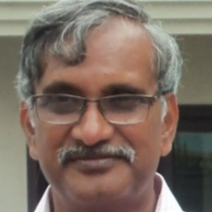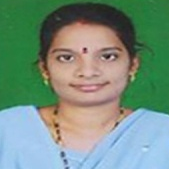International Journal of Intelligent Systems and Applications (IJISA)
IJISA Vol. 6, No. 4, 8 Mar. 2014
Cover page and Table of Contents: PDF (size: 1503KB)
A New Dual Channel Speech Enhancement Approach Based on Accelerated Particle Swarm Optimization (APSO)
Full Text (PDF, 1503KB), PP.1-10
Views: 0 Downloads: 0
Author(s)
Index Terms
Dual Channel Speech Enhancement, Particle Swarm Optimization, Accelerated Particle Swarm Optimization (APSO)
Abstract
This research paper proposes a recently developed new variant of Particle Swarm Optimization (PSO) called Accelerated Particle Swarm Optimization (APSO) in speech enhancement application. Accelerated Particle Swarm Optimization technique is developed by Xin she Yang in 2010. APSO is simpler to implement and it has faster convergence when compared to the standard PSO (SPSO) algorithm. Hence as an alternative to SPSO based speech enhancement algorithm, APSO is introduced to speech enhancement in the present paper. The present study aims to analyze the performance of APSO and to compare it with existing standard PSO algorithm, in the context of dual channel speech enhancement. Objective evaluation of the proposed method is carried out by using three objective measures of speech quality SNR, Improved SNR, PESQ and one objective measure of speech intelligibility FAI. The performance of the algorithm is studied under babble and factory noise environments. Simulation result proves that APSO based speech enhancement algorithm is superior to the standard PSO based algorithm with an improved speech quality and intelligibility measures.
Cite This Paper
K.Prajna, G.Sasi Bhushan Rao, K.V.V.S.Reddy, R.Uma Maheswari, "A New Dual Channel Speech Enhancement Approach Based on Accelerated Particle Swarm Optimization (APSO)", International Journal of Intelligent Systems and Applications(IJISA), vol.6, no.4, pp.1-10, 2014. DOI:10.5815/ijisa.2014.04.01
Reference
[1]B. Widrow, and S. Stearns, Adaptive Signal Processing , Englewood Cliffs, NJ: Prentice Hall, 1985
[2]T.Ueda, H suzuki, Performance of Equalizers Employing a Re-training RLS Algorithm for digital mobile radio communications , 40th IEEE Vehicular Technology Conference, 1990, pp 553-558
[3]P.Mars, J.R.Chen, and R. Nambiar, Learning algorithms: theory and applications in signal processing, control and communications, CRC Press, Boca Raton, FL, 1996
[4]R.C.Eberhart, and J.Kennady, A new optimizer using particles swarm theory,Proceedings of the Sixth International Symposium on Micro Machine and Human Science, Nagoya, Japan, IEEE Press, Piscataway,NJ,1995, pp.39-43.
[5]Krusicnski, D.J. and Jenkins, W.K., Adaptive Filtering Via Particle Swarm Optimization,” Proceedings of 37th Asilomar Conf on Signals, Systems, and Computers, November 2003.
[6]D. J. Krusienski and W. K. Jenkins, Design and Performance of Adaptive Systems Based on Structured Stochastic Optimization Strategies, Circuits and Systems Magazine, Vol. 5, No. 1, 2005, pp 8 –20.
[7]Laleh Badri Asl and Vahid Majid Nezhad, Speech enhancement using Particle swarm optimization Techniques, International conference on Measuring Technology and Mechatronics Automation, 2010, pp 441-444.
[8]Laleh Badri Asl and Vahid Mjid Nezhad, “Improved Particle Swarm Optimization for Dual-Channel Speech Enhancement”, International Conference on Signal Acquisition and Processing, 2010, pp 13-17.
[9]L.Badri Asl and M.Geravanchizadeh, Asexual Reproduction based adaptive quantum particle swarm optimization algorithm for dual channel speech enhancement , International conference on Information science, Signal Processing and their Applications, ISSPA, 2010 , pp 129-132.
[10]Sina Ghalami Osgouei, and Masoud Geravan Chizadeh, Dual –Channel Speech Enhancement based on a Hybrid Particle Swarm Optimization Algorithm, 5th International Symposium on Telecommunications (IST’ 2010), pp.873-877.
[11]White, M.S. and Flockton,S.J., Chapter in Evolutionary Algorithms in Engineering applications, Springer Verlog, 1997, pp.361-376
[12]Kumon, T.Iwasaki, M.,Suzuki, T.Hashiyama, T.;Matsui,N., Okuma,S., Nonlinear system identification using Genetic Algorithm Industrial Electronics Society, IECON 2000. 26th Annual conference of the IEEE- volume 4, 22-28 Oct. 2000, pp. 2485- 2491 Vol.4.
[13]X.S.Yang, Nature-Inspired Metaheuristic Algorithms, Luniver Press, 2nd edition, 2010.
[14]Yang, X. S., Deb, S., and Fong, S., Accelerated Particle Swarm Optimization and Support Vector Machine for Business Optimization and Applications, in: NDT2011, CCIS 136, Springer,2011, pp. 53-66
[15]A.Rix, J. Beerens,M.Hollier and A. Hekstra, Perceptual evaluation of speech quality (PESQ) - A new method for speech quality assessment of telephone networks and codecs , in Proc. IEEE, Int. Conf. Acoustics Speech, Signal processing, 2001;vol.2, pp 749-752.
[16]Philipos C.Loizou, Speech Enhancement Theory and Practice, CRC press.2007
[17]Y.Hu and P.Loizou, Subjective comparison of speech enhancement algorithms, ICASSP Proceedings. Toulouse, Franc., 2006, pp 153-156.
[18]Philipos C. Loizou and Jianfen Ma, Extending the articulation index to account for non-linear distortions introduced by noise- suppression algorithms, J. Acoustic Society of America, 2011, pp 986-995.
[19]http://www.utdallas.edu/~loizou/speech/noizeus
[20]http://www.speech.cs.cmu.edu/comp.speech/Section1/Data/noisex.html.



